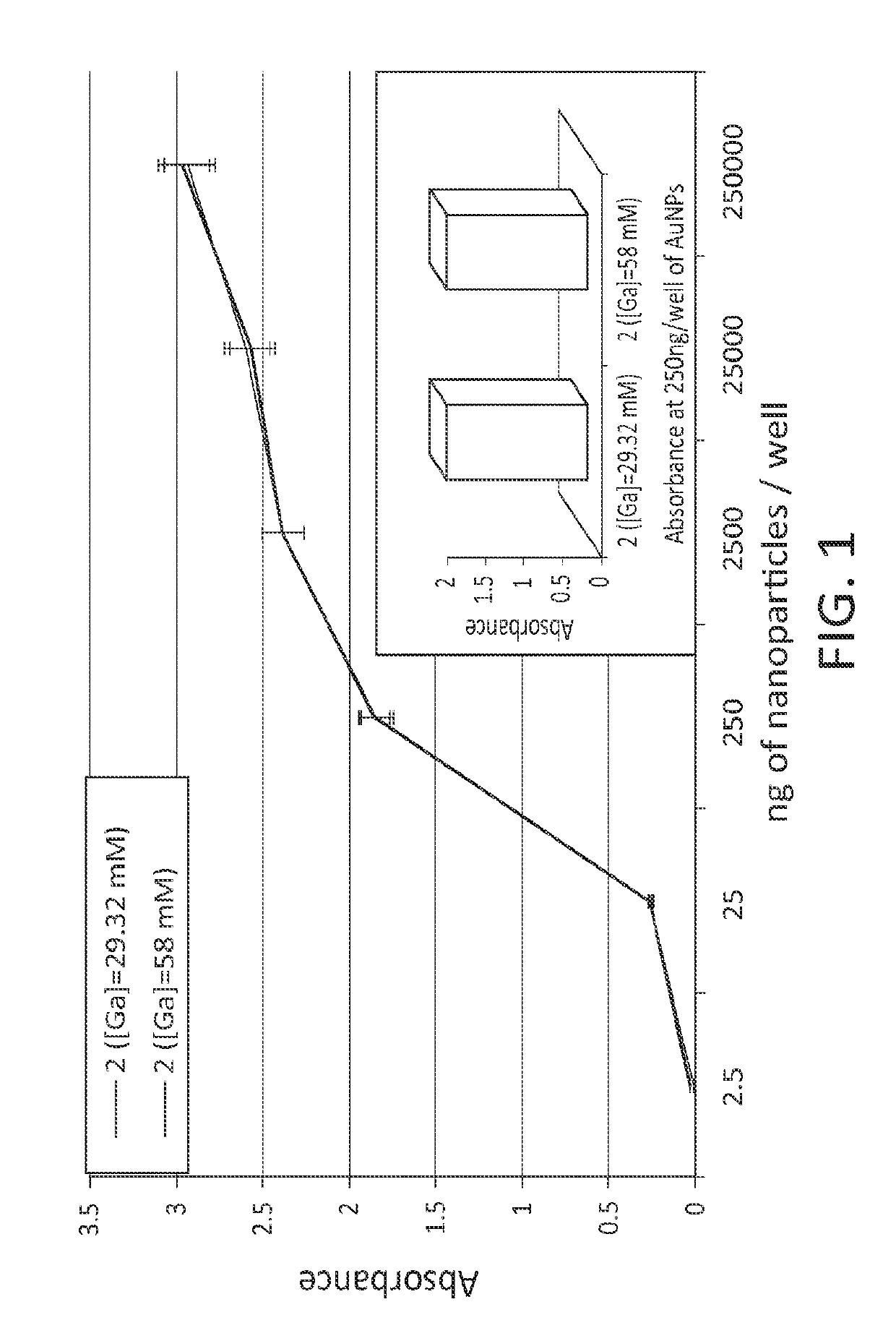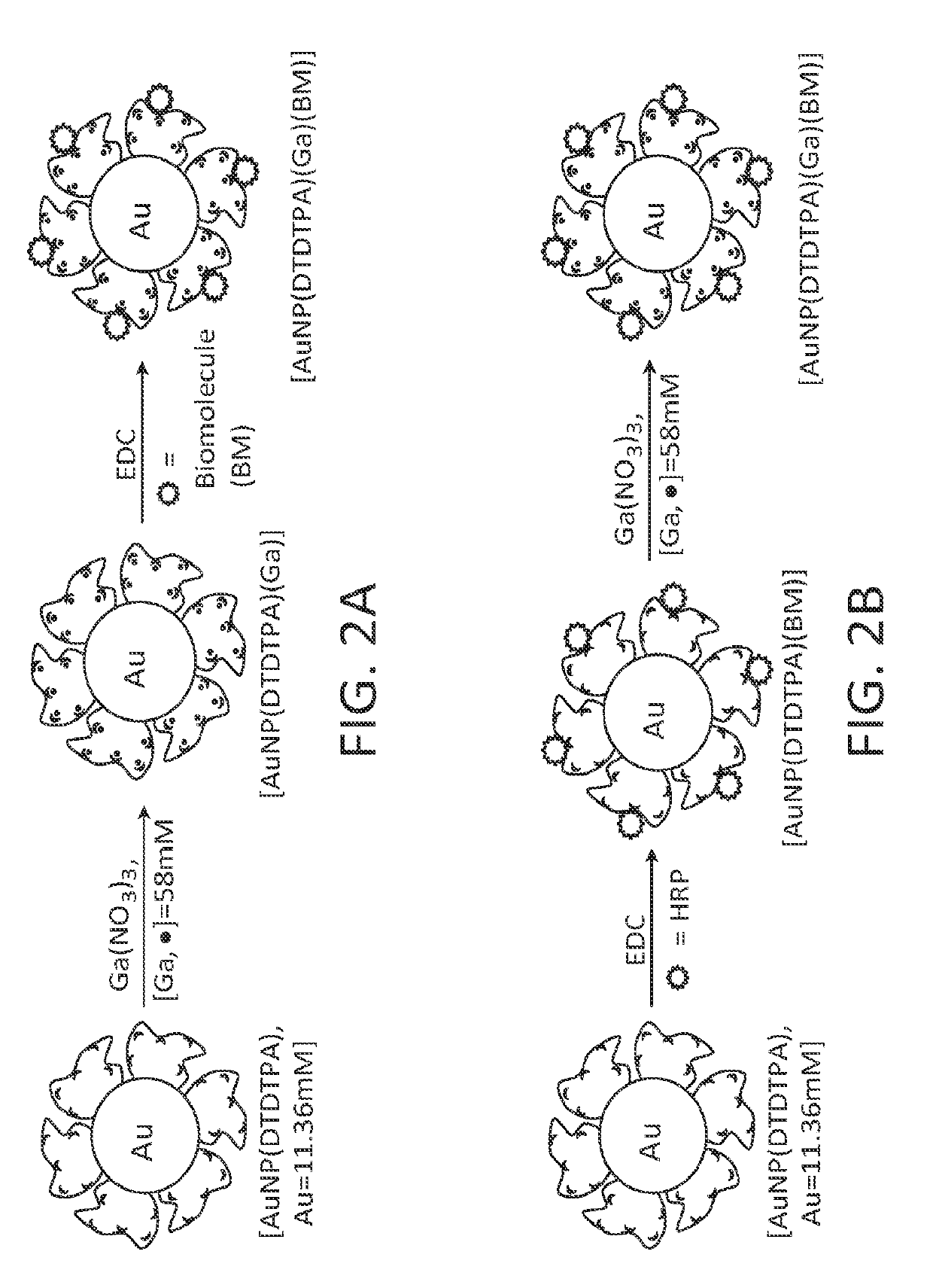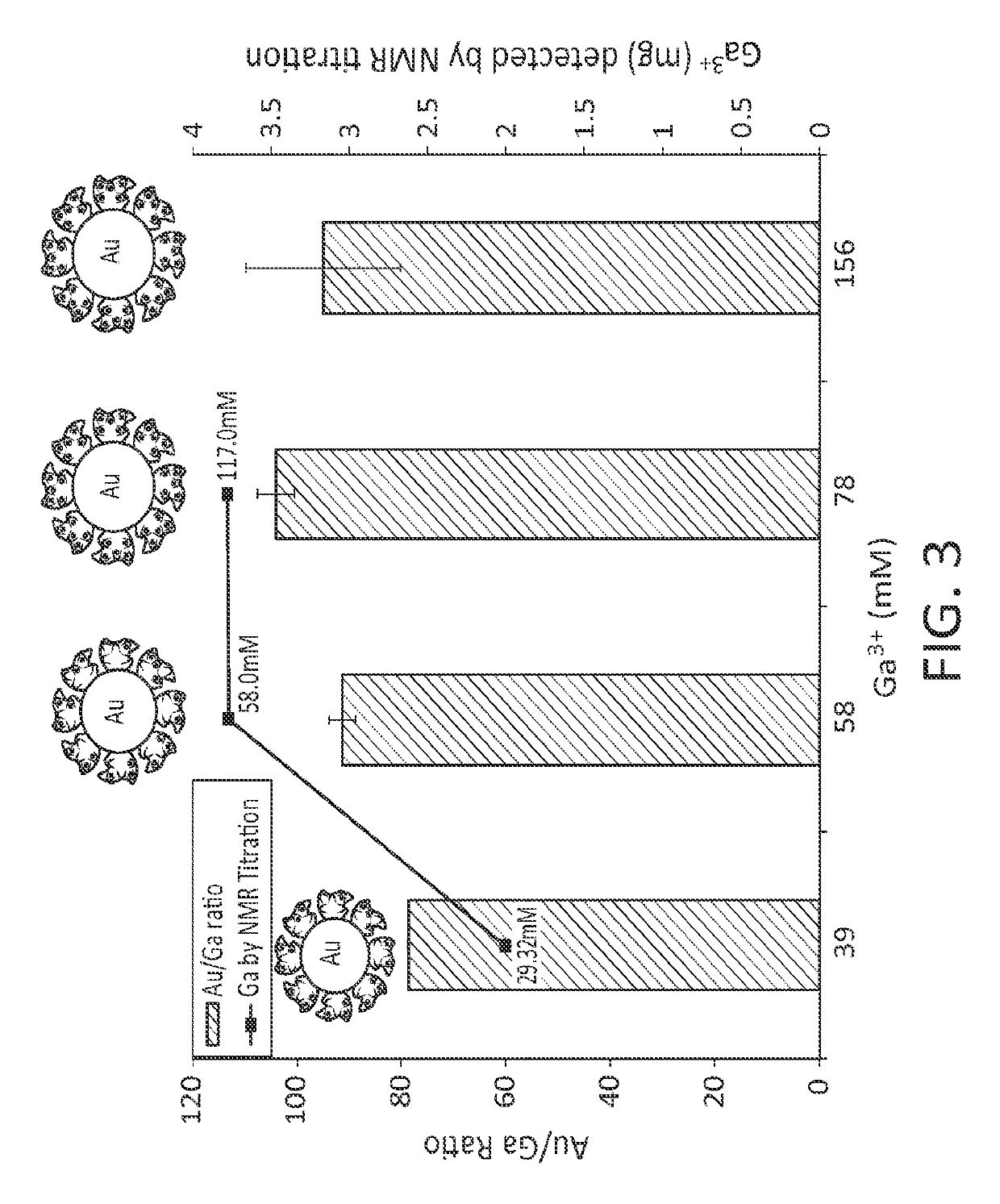AU multicomponent nanomaterials and synthesis methods
a nanomaterial and multi-component technology, applied in the field of composite nanomaterials, can solve the problems of significant synthesis challenges of combining multiple components within a single nanomaterial, and loss of one or more desired properties of individual materials
- Summary
- Abstract
- Description
- Claims
- Application Information
AI Technical Summary
Benefits of technology
Problems solved by technology
Method used
Image
Examples
example 1
[0074]By determination of the amount of Au by AAS and the amount of Ga by ICP-OES, the inventors have calculated that the maximum molar ratio Ga:Au that can be obtained is ≈1.2, which means that there is slightly more Ga in the AuNPs than Au. This is actually a plausible result if one takes into account that the Au cores are very small (3-5 nm) and the polymeric coating of DTDTPAs can coordinate considerable amount of Ga. The zeta potential value of 2 (−81 mV (1) to −55 mV) shows a positive shift indicating coordination of electropositive gallium coordination.
[0075]In order to investigate the maximum concentration of gallium that can be incorporated within the nanoconstruct (1) the inventors performed serial titrations of 1 with Ga3+ and evaluated the resultant conjugate using both Ga-71 NMR spectroscopy and ICP-OES analysis (See FIG. 3). The NMR active 71Ga is used as a probe to determine the concentration of chelated Ga. NMR of different concentrations of Ga(NO3)3 were recorded in...
example 2
[0077]Synthesis of [AuNP(DTDTPA)(Peptide)] was conducted as described below. The following peptides were used.
[0078]
SEQ ID NO: 1Peptide 1 =Thioctic acid bombesin; Lipoic-Gln-Trp-Ala-Val-Gly-His-Leu-Met-NH2 (Lipoic-QWAVGHLM-NH2)SEQ ID NO: 2Peptide 2 =Thioetyl-Lys-Lys-Lys(DOTA)-PEG2-Tyr-His-Trp-Tyr-Gly-Tyr-Thr-Pro-Gln-Asn-Val-Ile [Thioctyl-KKK(DOTA)-PEG2-YHWYGYTPQNVI]
[0079]General Procedure:
[0080]Thioctic acid terminated peptide was reacted with gold nanoparticles with stoichiometric ratios of Au:Peptide 1:0.25, 1:0.5, 1:1, 1:2 and 1:4. Typically, in a 20 ml glass vial, a solution of AuNP-DTDTPA ([Au]=2.28 μmol) using aqueous / methanolic mixture (1:9) of 0.01M NaOH was prepared. Thioctic acid terminated peptide [0.57 μmol, 1.14 μmol, 2.27 μmol, 4.54 μmol and 9.08 μmol] were dissolved in 4 mL of MeOH and then added to the nanoparticles solution. The reaction mixture was stirred for 2 hours at room temperature and formation of a dark brown precipitate was observed. The mixture was centri...
PUM
| Property | Measurement | Unit |
|---|---|---|
| concentration | aaaaa | aaaaa |
| size | aaaaa | aaaaa |
| hydrodynamic size | aaaaa | aaaaa |
Abstract
Description
Claims
Application Information
 Login to View More
Login to View More - R&D
- Intellectual Property
- Life Sciences
- Materials
- Tech Scout
- Unparalleled Data Quality
- Higher Quality Content
- 60% Fewer Hallucinations
Browse by: Latest US Patents, China's latest patents, Technical Efficacy Thesaurus, Application Domain, Technology Topic, Popular Technical Reports.
© 2025 PatSnap. All rights reserved.Legal|Privacy policy|Modern Slavery Act Transparency Statement|Sitemap|About US| Contact US: help@patsnap.com



